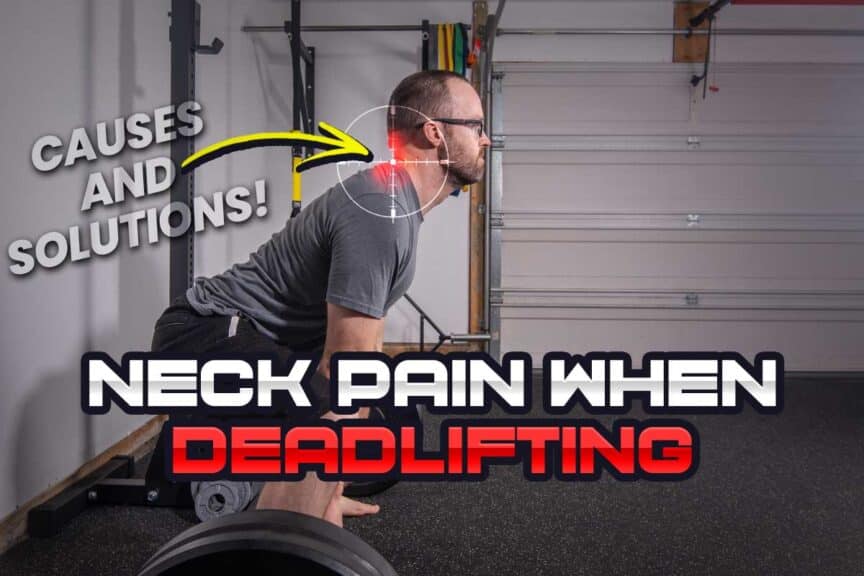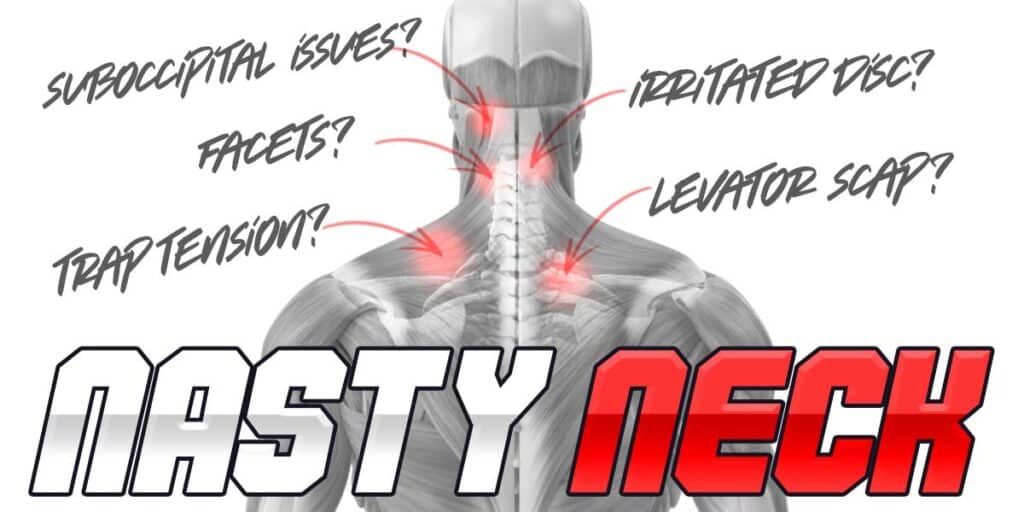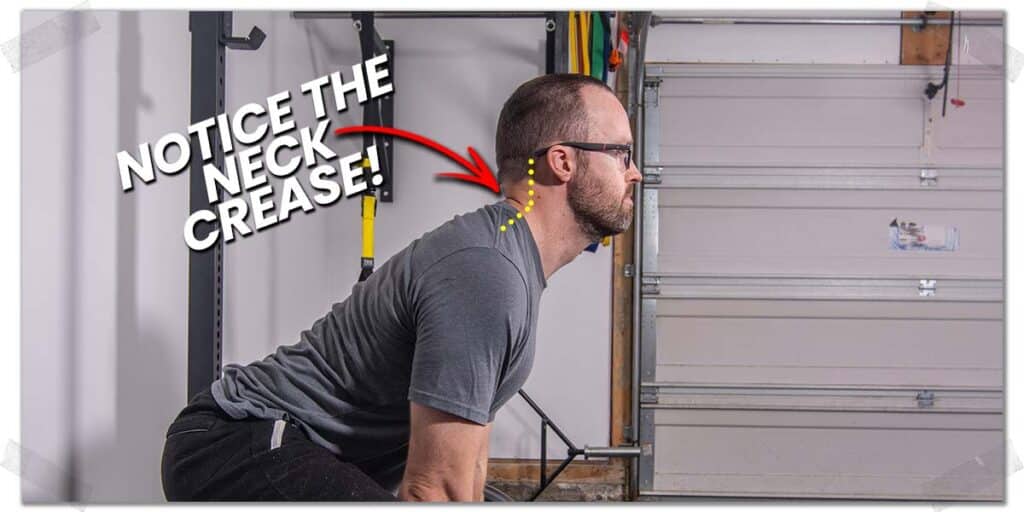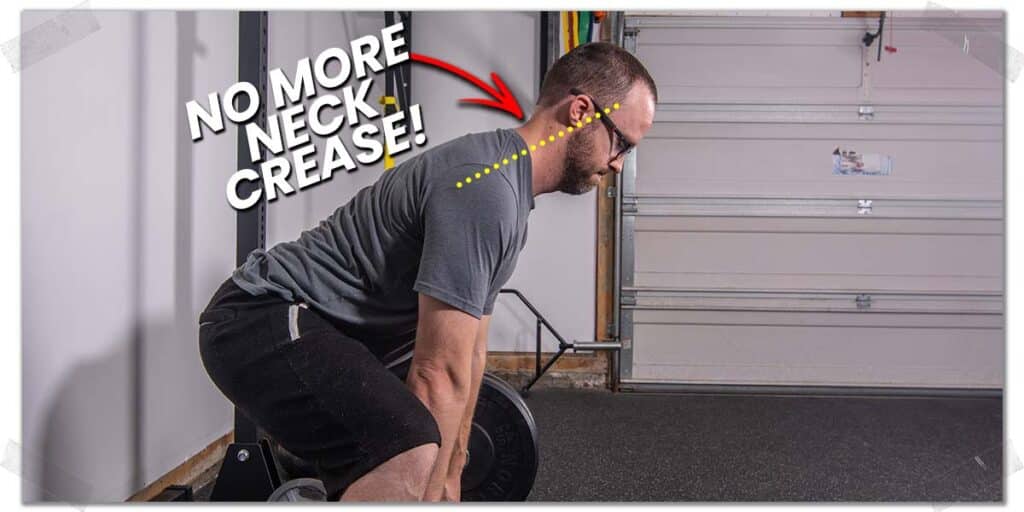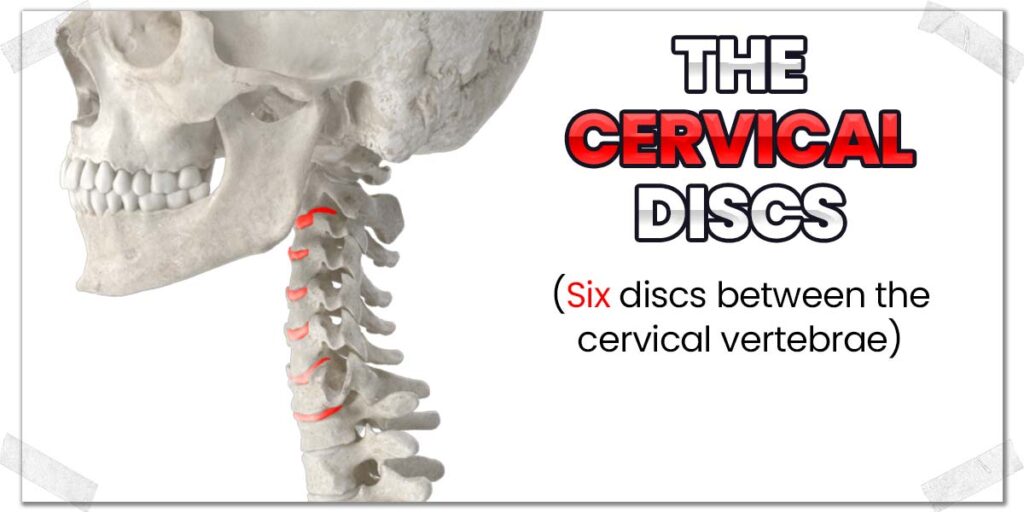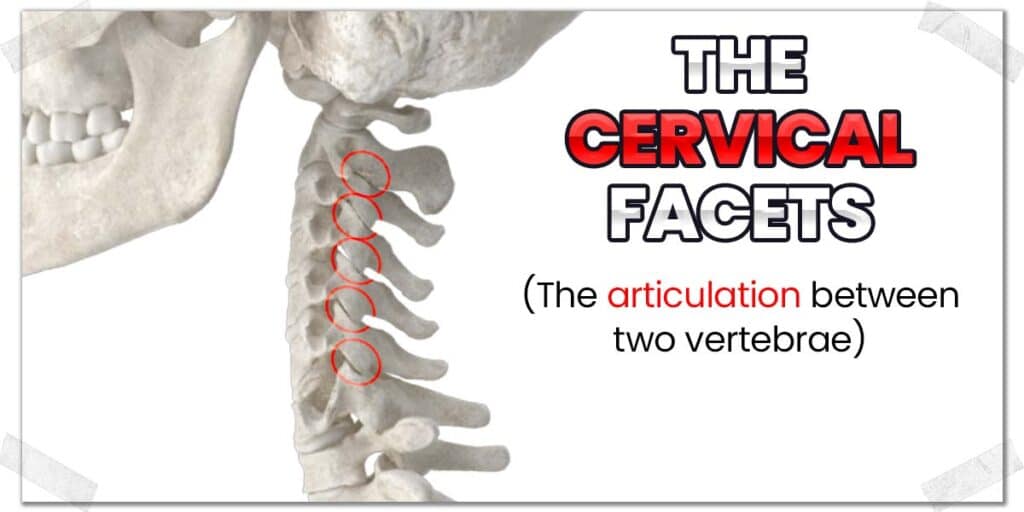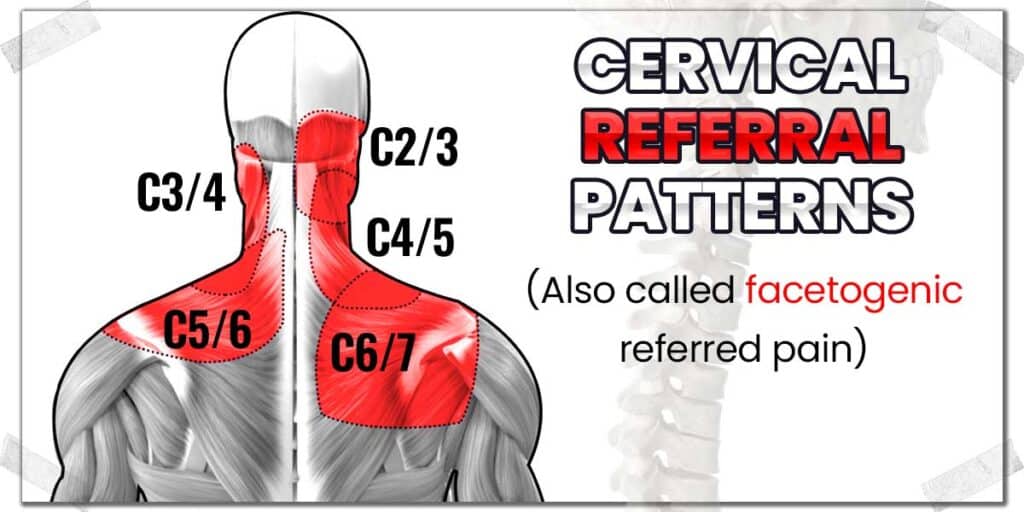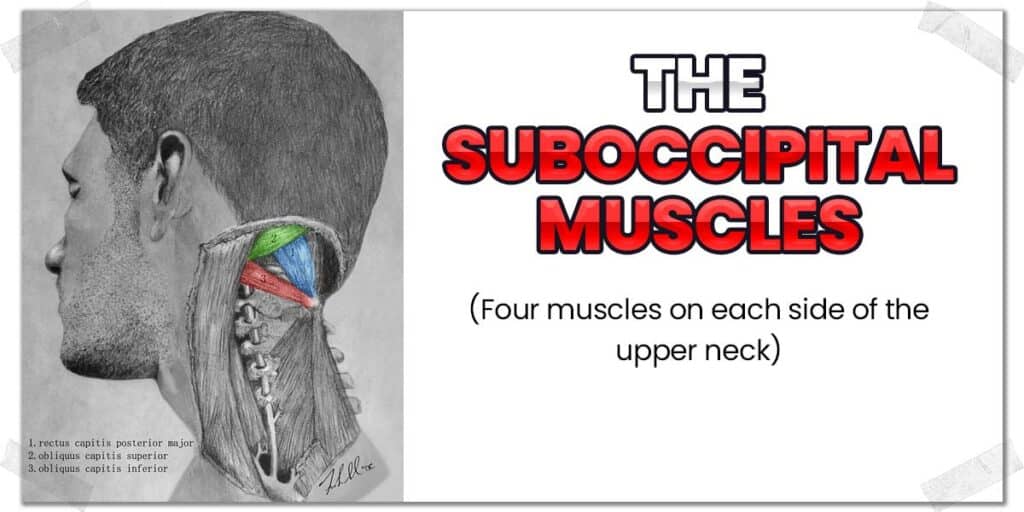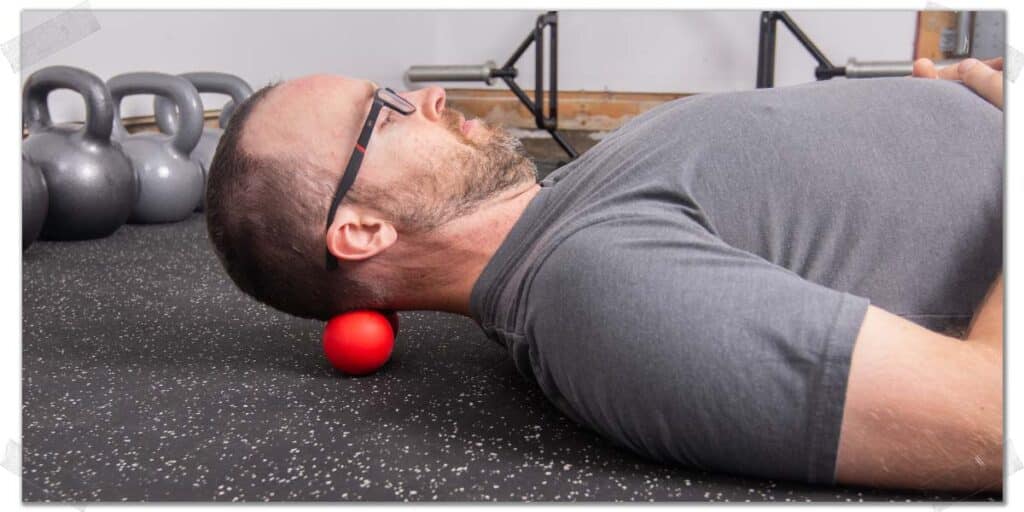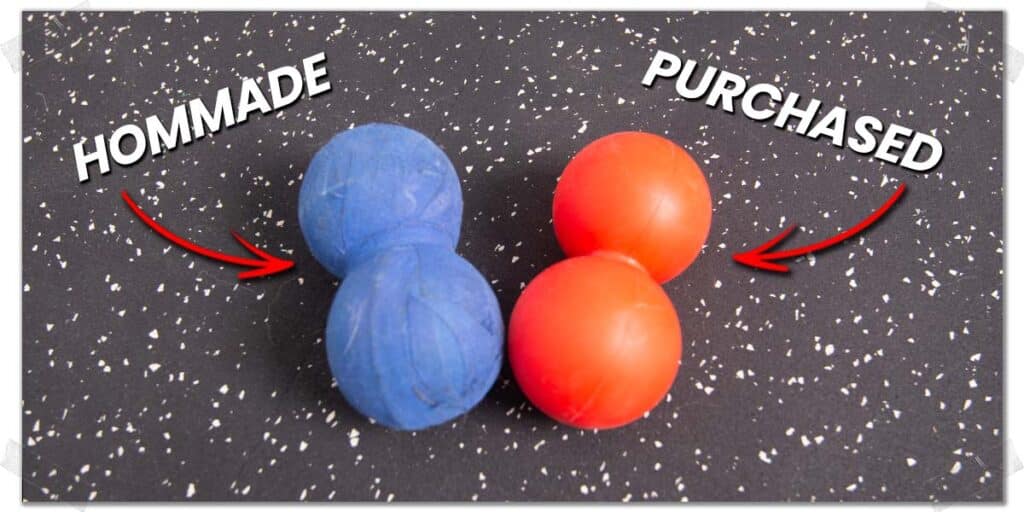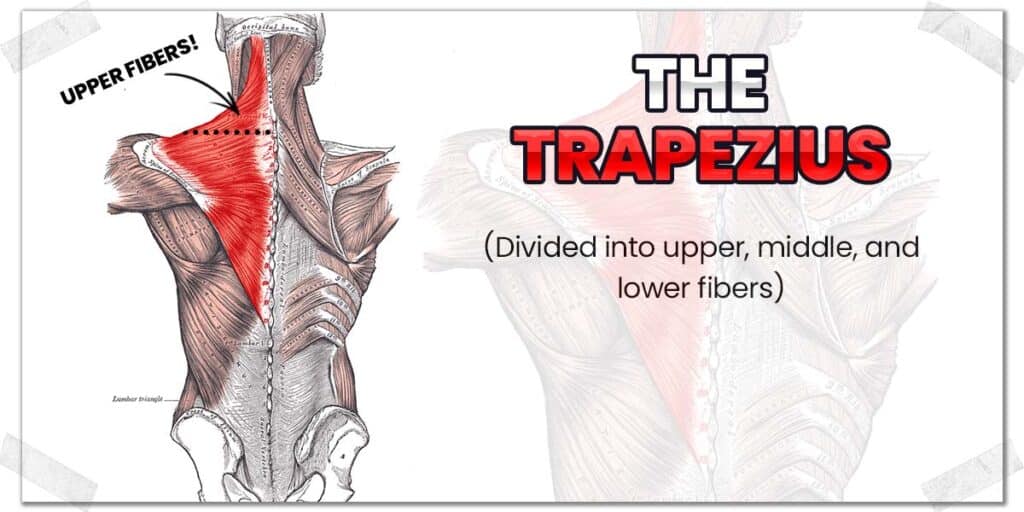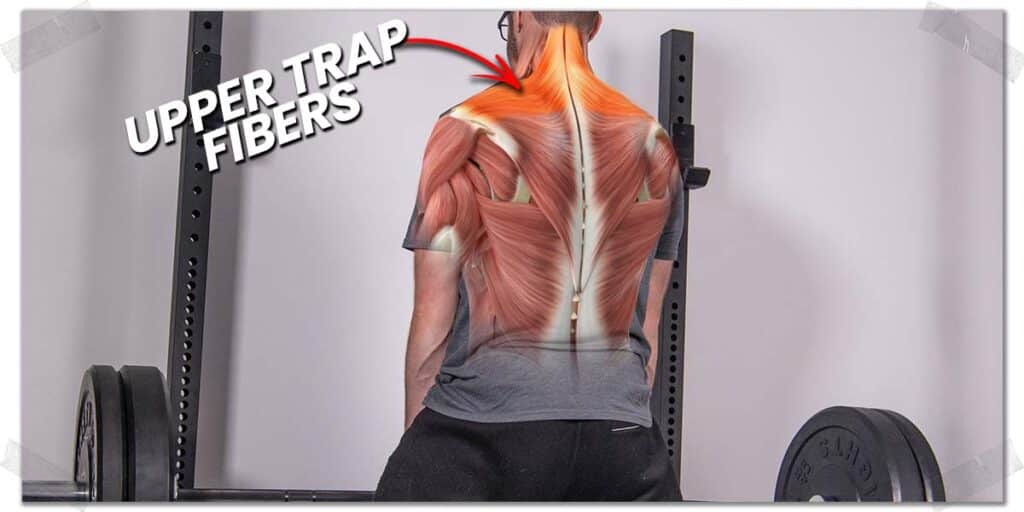Deadlifts have a reputation for challenging nearly every aspect of the body. In contrast, the neck has a reputation for being quite finicky and prone to experiencing various forms of pain or discomfort. Naturally, when you put a challenging exercise together with a sometimes unpredictable body part, you’re bound for an occasional neck issue or two to arise.
So, if you’re reading this article, you’re about to learn a whole lot as to why this issue happens and—more importantly—how to take the steps to fix it altogether. You’ll undoubtedly learn some very valuable clinical pearls and practical strategies that will go a long way toward getting you back to deadlifting without any pain in your neck.
But first, as always, here’s the two-sentence answer for why and how neck issues arise when deadlifting:
Neck pain from deadlifting often results from poor head technique, excessive tension on the levator scapulae muscle, the upper trapezius fibers, suboccipital muscles, and from irritated discs and facets within the neck. The issues can often be resolved with simple techniques.
Alright, enough with the overly simplistic explanation; let’s get serious here!
A small request: If you find this article to be helpful, or you appreciate any of the content on my site, please consider sharing it on social media and with your friends to help spread the word—it’s truly appreciated!
As I get going with the common causes of neck pain from deadlifting, there are three critical factors I’d like you to be aware of:
- I can’t cover every possible cause (or solution) for neck pain lifters’ experience from deadlifts within one article (but I can certainly cover the prominent ones that plague lifters the most).
- There’s no rule stating that there can only be one individual pain-generating structure or single cause for a sore neck when deadlifting. Though I will be discussing and referring to different causes and factors individually, there may be multiple reasons for neck issues arising. Keep this in mind as you work to determine what might be causing your neck to feel stiff, sore, tight, or painful.
- Your best bet for fixing your neck is always through proper evaluation from a qualified healthcare professional, which I always advocate for my readers to do if you have the means to do so.
Related article: How to Fix Neck Pain From Squats (And Why It Happens) | Expert Insight
Issue 1: Excessive cervical extension during the lift
I’m starting with this neck-positioning issue since it is the easiest to clean up if it applies to you. Don’t gloss over this section—it’s worth the read.
Many lifters, particularly those new to the deadlift, often keep their cervical spine (neck) in a position of excessive extension (looking upwards). This neck-positioning error is most likely to occur during the setup and early pulling phase of the lift.
“If improper neck positioning during your deadlift is solely what’s irritating your neck, keeping your cervical spine in an ideal position during the lift can clean up your neck pain rather nicely.”
While this position of cervical extension isn’t necessarily harmful to an otherwise healthy neck, necks that already have underlying dysfunction within them (such as a mildly irritated facet joint, hypermobility, or excessive muscular tension, etc.) can be extra sensitive to aggressive or prolonged cervical extension, especially when excessive muscular tension is placed on the shoulders from the downward pull of the barbell (such as with the deadlift).
RELATED CONTENT:
Ideal head and neck positioning during the deadlift
When deadlifting, it’s best to keep your neck in a neutral position, particularly during the setup and the early pull off the floor. In this context, neutral refers to the halfway point between your neck being fully flexed towards (as if trying to touch your chin to your chest) and fully extended (as if trying to look straight above you).
When you’re all set up in your starting deadlift position with neutral neck positioning, you’ll be looking downwards with your eyes starting at the ground approximately one or two feet in front of the barbell.
With this neutral neck position, your chin will be tucked slightly downwards. If you feel your chin start lifting upwards, it means you’re moving into cervical extension, which you’ll likely want to avoid if you’re already dealing with an irritated neck.
Related article: How To Improve Neck Endurance (Use This Science-proven Exercise)
If improper neck positioning during your deadlift is solely what’s irritating your neck, keeping your cervical spine in an ideal position during the lift can clean up your neck pain rather nicely. The pain might go away near-instantaneously for some, while for others, it can take a bit of time (a few days, etc.) to let the neck “cool off.”
Regardless, once you’re no longer putting your neck into a position it doesn’t like, you will likely find your neck in a happier state as time passes (both when deadlifting and when outside of the gym).
Let’s dive a bit deeper here to look at which structures in the neck can cause pain and discomfort from cranking your neck upwards into extension when deadlifting.
Sub-issue 1: Cervical disc issues
The cervical intervertebral discs (often just called discs) are the hockey puck-like pieces of cartilage that sit between each of your cervical vertebrae. Like any other structure in the body, they are prone to becoming irritated, unhealthy, and painful.
While the specifics of disc pathology (the cause and effects) are far beyond the scope of this article, here’s what you need to know:
- Cervical discs, when irritated or unhealthy, often won’t tolerate extension (looking upwards). This neck position may put pressure on the disc(s) in ways that cause pain or discomfort to be felt along the neck or down in between the shoulder blades (known as a Cloward point referral pattern).
- Cervical discs can become unhealthy for numerous reasons. It’s not necessarily that deadlifts are the direct cause of their unhealthy state; rather, it’s much more likely that some aspect of the deadlift is contributing to the underlying issue.
The solution for cervical disc issues
The discs in the cervical spine tend to become problematic for many people at some stage of their life, so don’t freak out if you’re one of the many who has an irritated or unhealthy disc; conservative rehab can be quite helpful for resolving these issues.
You will absolutely want to get an evaluation from a qualified healthcare professional so you can get an accurate understanding of the severity and nature of your condition. Having someone guide you through the process of rehabbing your cervical discs is a very smart move to make.
For home remedies, cervical traction can be quite helpful. Traction involves the gentle separation or decompression of the discs and joints within the neck, which can be quite pain-relieving and therapeutic for irritated and budged discs.
Traction helps to create a reduced pressure gradient in the disc, which, theoretically, helps to reduce the outward budging of the disc.
Home traction devices for the neck are thankfully rather inexpensive. There are different types on the market, but my favourite is the Dr. Ho-styled one that you pump up. I’ve had good success with these types, so they’re what I recommend (I find them much more practical and portable than other styles, personally).
Sub-issue 2: Cervical facet issues
Much the same as the cervical discs, the facet joints within the cervical spine can often become irritated and subsequently painful for a variety of reasons, to which they become sensitive to exercises such as the deadlift.
The facet joints refer to the articulation where one vertebra bone links up with another, forming a joint. These joints are what permit movement to take place within the neck (or elsewhere throughout the entire spine).
Anatomy fact: facet joints are also called zygapophyseal joints (most people just call them facet joints, though).
It’s not uncommon for these joints to become stiff, arthritic, or otherwise irritated. When this occurs, lifters with neck pain will often feel the effects of facet joint irritation anywhere in their neck or upper shoulder region through what are known as facetogenic referral patterns.
Here’s a visual map of where each joint will send its pain or discomfort:
Anatomy image: Envato Elements
The solution for cervical facet issues
You’ll likely need a qualified healthcare practitioner, such as an orthopedic physical therapist, to confirm (diagnose) that your neck pain is, in fact, the result of one or more cervical facet joints acting up. They’re just super tricky to tackle on your own since it’s in an area you can’t see or access all that well with your own hands.
That being said, not everyone has access to or funds for a qualified professional to work on their neck. Thankfully, there are some outstanding steps you can still take, both of which have a good track record for helping restore movement to stiff joints while helping strengthen neck muscles in the process.
If you want the details of fixing stiff joints and strengthening your neck muscles with nothing more than a hand towel and some Theraband, check out my YouTube videos and linked articles below:]
Sub-issue 3: suboccipital muscle tension
The suboccipital muscles are a group of paired muscles (four on each side) on the upper portion of the neck just beneath the base of your skull.
Their primary role (collectively) is to produce rotation and extension at the upper portion of the neck (through the first two vertebrae).
One of the main issues with excessive and repeated cervical extension that can arise is hypertonic (overly tense) suboccipital muscles.
Pro tip: Poor posture, such as when sitting slumped at a desk while staring at a computer screen, can also produce tight suboccipital muscles due to the chronic cervical extension pattern to which the neck is exposed. This can lead to a tense or sore upper neck and even headaches.
The solution for suboccipital muscle tension
As with most solutions, in an ideal world, you can get targeted treatment for these muscles (and the rest of your neck) through a qualified healthcare professional, such as an orthopedic physical therapist. Massage, active release techniques, intramuscular stimulation, etc., can all work well for these issues. But we don’t always live in an ideal world.
While the suboccipital muscles can be tricky to treat by yourself, there’s a nice little strategy you can employ to help reduce any excessive tension they may have. Here’s how it works:
- Grab two tennis balls and tape them together using any tape you have on hand (I have used traditional white athletic tape and kinesiology tape (K-tape), both of which work just fine. The final shape should look like a peanut.
- Lay down on the floor and place the “peanut” just beneath the base of your skull. It should now be placing a firm but tolerable pressure on the suboccipitals.
- Lay here for a few minutes, relaxing your body and letting the ball sink deeper as you breathe in and out. The pressure the “peanut” exhibits just beneath the base of your skull should feel strong but tolerable and even therapeutic.
So long as this feels therapeutic, get in the habit of doing this a few times per day. It likely won’t make a lasting difference after your first session or two, but doing this a handful of times over the next few days can lead to noticeable improvements in how these tight muscles feel.
Pro tip: If you don’t want to tape two tennis balls together, you can buy two already attached balls designed for this purpose. You can also use it on other body parts, like your middle and upper back. Just search “peanut ball” in Google or on Amazon, and you’ll be presented with all sorts of options.
Issue 2: Levator scapulae issues
There’s a standing joke in our clinic that the levator scapula muscle is the bad-guy muscle since “levator” rhymes with Darth Vader (the main villain in Star Wars). And it often seems like a bad guy muscle since it can wreak havoc on necks by becoming overly tight and dysfunctional.
The levator scapula is a lesser-known muscle to many gymgoers and fitness enthusiasts. It sits underneath the upper trapezius muscle fibers, and runs from the upper corner of the shoulder blade (known as the superior medial angle of the scapula) up to the side of the neck (the transverse processes of the upper cervical vertebrae) just beneath the skull.
The role of this muscle (there’s one on each side of the body) is to:
- Raise the shoulder blade upwards while also rotating it slightly downwards
- Bend the neck to the side (known as lateral flexion)
I won’t get overly specific about its actions here within this article. Ultimately, it’s just worth knowing that this muscle undergoes a lot of stress and strain when deadlifting.
As you’ll soon read about with the upper trapezius fibers, if the upper back muscles weren’t aggressively contracting throughout the deadlift, your shoulder blades would ultimately get pulled to the floor, which is no bueno.
To counter this, the levator scapulae (along with the upper trapezius fibers) must stay in a contracted state (working aggressively) when holding a heavy weight in our hands (such as a barbell), which can cause them to become overworked, tight, and chronically sore.
The solution for levator scapula issues
Since, for simplicity’s sake within this article, the levator scapulae has a very similar function to the upper trapezius fibers, I’ll put the solution for levator scapulae issues in the following section for the solution with upper trapezius muscle issues since they will both require the same intervention(s).
Sometimes, getting to the root cause of levator scapulae dysfunction can be a bit tricky and oftentimes involves postural cueing techniques with scapular (shoulder blade) positioning to help reduce the constant stretch this poor muscle can otherwise experience.
Issue 3: Upper trapezius muscle fiber issues
Upper trapezius issues are incredibly common with lifters, particularly those who routinely pull heavy weight off the floor.
The trapezius muscle is the large muscle on your mid-upper back and is anatomically divided into three segments:
- The upper fibers
- The middle fibers
- The lower fibers
The upper fibers are the ones we’re interested in here since they run from the top of your shoulders all the way up to the base of your skull. The main role of these muscle fibers is to elevate your shoulders (shrugging your shoulders up toward your ears) and to help rotate your shoulder blades upwards. They also help to bend your neck to the side (known as lateral flexion) when working one at a time and to extend your neck (pull it backwards) when working simultaneously.
For the sake of the issue at hand, however, we’re most interested in the shoulder shrugging motion that the upper trapezius fibers perform. While the entire trapezius muscle is activated when deadlifting, these upper fibers, in particular, undergo the most significant activation (by far).
Why? Because the upper trapezius muscles have to resist the barbell’s downward pull on the shoulders at all times. Without this, your shoulders get pulled down towards your ankles when deadlifting. This is why deadlifts build a thick neck by beefing up your upper traps.
If you’ve been performing a high volume of deadlifting or upper back training, particularly with heavier loads, it’s entirely possible that your upper traps are overworked and dealing with the effects of myofascial dysfunction, which can commonly occur in muscles that are exposed to repeatedly challenging demands.
Pro tip: This also applies to the levator scapulae muscles as well since they are related in their function.
If it is a tight or overworked upper trap (or a set of tight upper traps) you’re experiencing, it will often be felt as a sore, tense, or aching sensation anywhere along the upper shoulder region, the base of the neck, and the mid-upper portion of the neck.
The solution for upper trapezius muscle fiber issues
If your upper traps are all gnarled up and filled with all sorts of muscle tension, it may not be that you’ve done anything “wrong” with your training or that there’s something wrong with your deadlift technique; it may just be that your poor traps have been getting overworked to the point that they need some tender love and care to get them back into a happier state.
If things are feeling tight, stiff, achy, or sore in this region, getting some targeted soft tissue treatment can often be of great benefit. This can include a number of treatment techniques, including:
- Massage therapy (deep tissue, sports massage, etc.)
- Active Release Techniques (ART)
- Dry needling (intramuscular stimulation or IMS)
There’s no universal “best” technique for reducing muscle tension in your upper traps or neck, so it may be worth experimenting to see what you feel to be most effective or what you’re most comfortable with.
Related article: Injuries & Reclaiming Exercise Motivation (Practical Steps)
Now, as some added food for thought:
It’s entirely possible that the upper trap dysfunction you’re experiencing is arising from poor shoulder mechanics and posture within your daily life and that deadlifting is only exacerbating the issue of sore or tight traps. Again, it all depends on numerous individual factors, all of which are far beyond the scope of this article.
As a general rule, if your shoulders, neck, and upper traps usually feel fine throughout your daily activities and only feel like hot garbage during or after your deadlifts, it’s likely that the muscular demand from the deadlifts is more of the primary culprit.
Final thoughts
Deadlifts are amazing, and necks are finicky. It’s not uncommon for sore necks to arise from deadlifts, particularly those of a heavier nature. Muscular soreness in the neck after deadlifting certainly isn’t abnormal, but pain is.
Take the time to ensure you are using optimal technique and that you don’t have any disc or joint issues going on within your cervical spine (your neck). If you’re dealing with generalized soreness, get some hands-on treatment for your neck, and it should help to take care of the issue at hand.
Frequently Asked Questions
Lifters and active folks often have various questions about deadlifts and their neck, so I’ve included a few brief answers below to be as helpful and informative as possible within this article.

Hi! I’m Jim Wittstrom, PT, DPT, CSCS, Pn1.
I am a physical therapist who is passionate about all things pertaining to strength & conditioning, human movement, injury prevention and rehabilitation. I created StrengthResurgence.com in order to help others become stronger and healthier. I also love helping aspiring students and therapists fulfill their dreams of becoming successful in school and within their clinical PT practice. Thanks for checking out my site!

